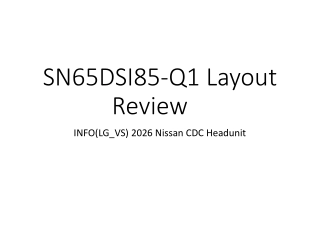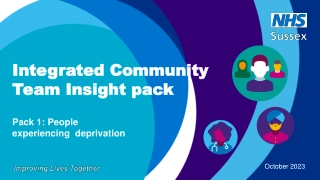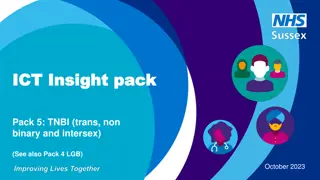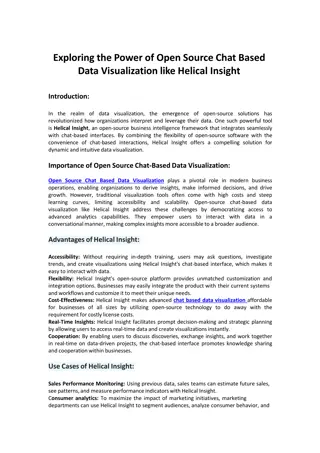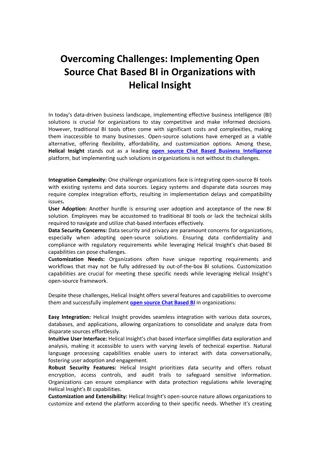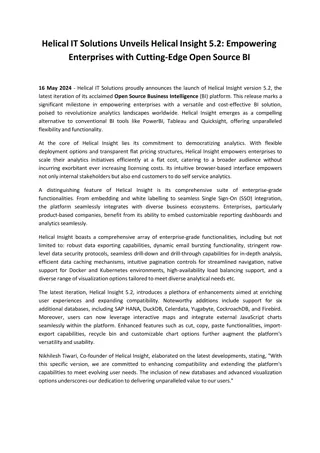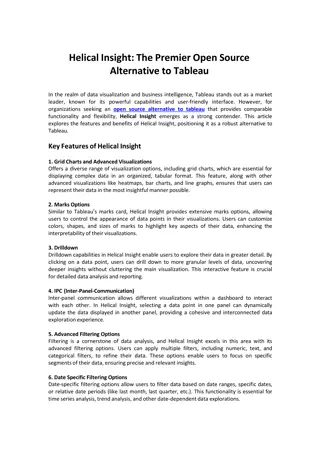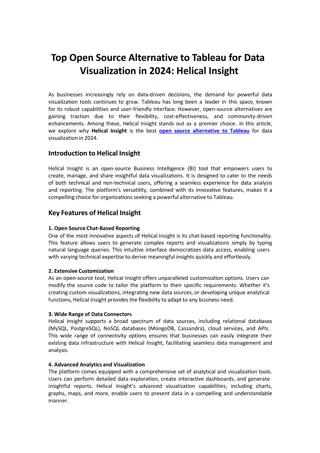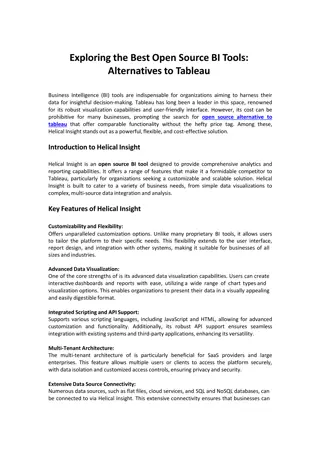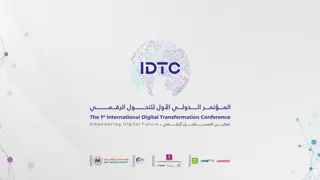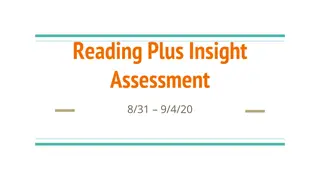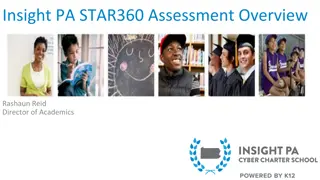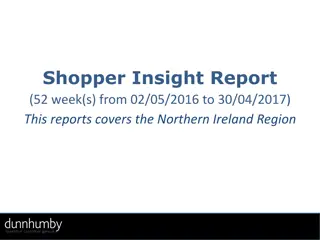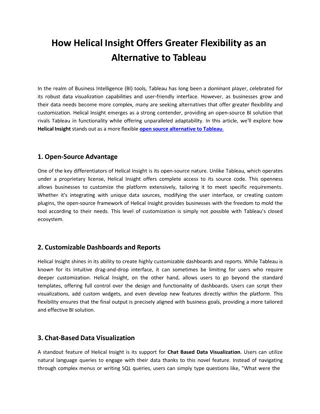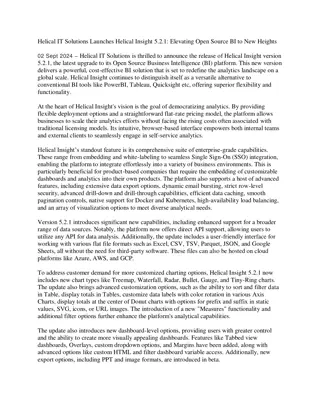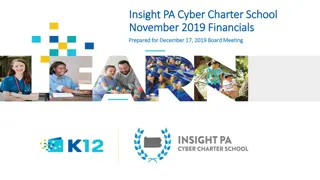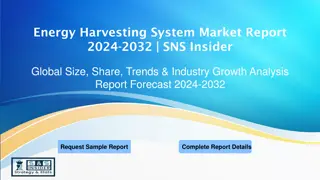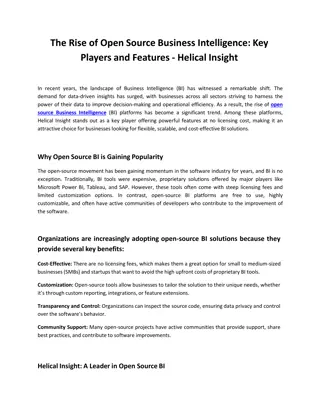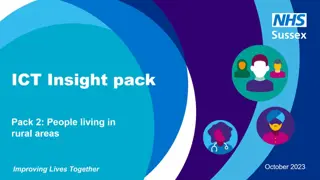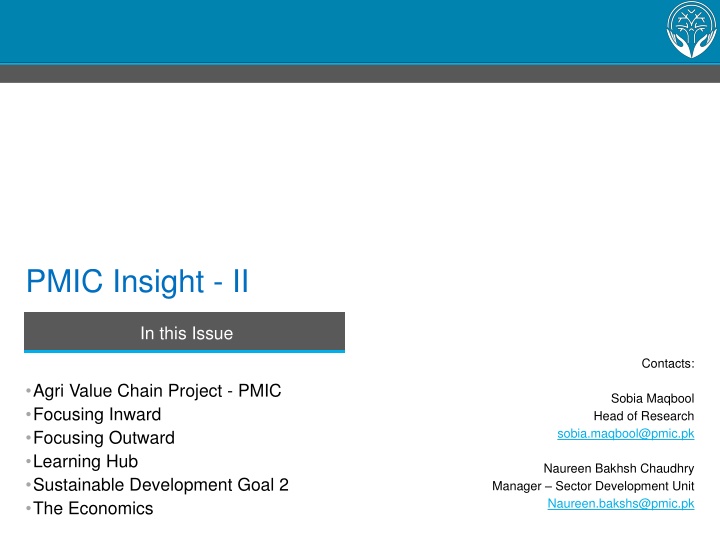
Agriculture Value Chain Project by PMIC: Empowering Small Farmers
Learn about PMIC's Agriculture Value Chain Project focusing on empowering small farmers in Pakistan by addressing challenges such as lack of knowledge, access to resources, and market connectivity. Through interventions like training, financial support, and forming farmer groups, the project aims to enhance agricultural practices, increase yields, and improve livelihoods in rural areas.
Download Presentation

Please find below an Image/Link to download the presentation.
The content on the website is provided AS IS for your information and personal use only. It may not be sold, licensed, or shared on other websites without obtaining consent from the author. If you encounter any issues during the download, it is possible that the publisher has removed the file from their server.
You are allowed to download the files provided on this website for personal or commercial use, subject to the condition that they are used lawfully. All files are the property of their respective owners.
The content on the website is provided AS IS for your information and personal use only. It may not be sold, licensed, or shared on other websites without obtaining consent from the author.
E N D
Presentation Transcript
PMIC Insight - II In this Issue Contacts: Agri Value Chain Project - PMIC Focusing Inward Focusing Outward Learning Hub Sustainable Development Goal 2 The Economics Sobia Maqbool Head of Research sobia.maqbool@pmic.pk Naureen Bakhsh Chaudhry Manager Sector Development Unit Naureen.bakshs@pmic.pk
Agriculture Value Chain Project - PMIC Problems of Small Farmers Interventions Results Lack of knowledge, awareness and resistance in employing latest farming techniques Exposure to high risk due to threat of natural calamities Capital constraints Dependence on middlemen for financial and non- financial needs, who techniques Lack of connectivity to markets often employ exploitative Social mobilization & awareness sessions Formation of Farmer Enterprise Groups (FEGs) Larger size loans for crop cultivation Provision of Crop Loan Insurance in addition to standard Life and Health Insurance facility Trainings on latest farming practices & farm visits by Fauji Fertilizer Company s Agri Extension Services department Soil sampling & testing Cotton picking training for women Backward and Forward linkages with agriculture input providers and agriculture produce purchasing entities Theory of Change Provision of credit allowed farming activities to be undertaken in a timely manner Trainings resulted in decrease of input costs due to efficient use of fertilizer and water Backward linkages provided access to quality seeds and fertilizers Adoption of good agricultural practices & quality inputs resulted in enhanced yields Connectivity with ginning/cotton factories, PASCO and corporate buyers allowed better prices to be realized for the produce Improved income stream for farmers Using a value chain approach to agriculture financing involving awareness and training for farmers, provision of capital and creation of backward & forward linkages can put the farmers on the path to prosperity Implementing Partners Pakistan Microfinance Investment Company Limited NRSP Microfinance Bank Sona Welfare Foundation Areas of Intervention 2017: Tehsil Ahmad Pur East of District Bahawalpur; Number of Farmers - 1,000 Overall: 3 pilots undertaken collectively by PMIC (ex- Micro Finance unit of PPAF), along with NRSP-MFB and SWF over the last 5 years; to-date benefitted more than 17,000 subsistence farmers in district Bahawalpur As part of the plan to upscale its initiatives, PMIC and SWF have recently signed an MOU of Rs. 260m to implement Agriculture Value Chain project for 5,000 smallholder rice farmers, in districts Nankana Sahib, Sheikhupura and Gujranwala What s Next? About PMIC About NRSP MFB About SWF Established in October 2016, PMIC is a vital player in the financial services eco-system of Pakistan. PMIC is focused on improving employment and marginalized segments in the country especially women and youth, while also creating equitable access to financial services within rural communities. The sponsors of PMIC include PPAF, Dfid through Karandaaz and KfW. SWF is the Corporate Social Responsibility arm of Fauji Fertilizer Company (FFC). SWF has been engaged with PMIC/PPAF and NRSP-MFB for the last 3 years and have been working to help add value in the lives of poor farmers in rural areas of Pakistan. NRSP MFB, established in 2011, is licensed by the SBP to operate as a nationwide microfinance bank. The bank provides microfinance services to the rural low income sector with an overall objective of mitigating poverty and promoting social welfare. Its equity capital has been contributed by IFC, Acumen, KFW and National Rural Support Programme. livelihood opportunities for
Focusing inward From 2015 to 2017, the gross loan portfolio outstanding in the microfinance sector has more than doubled from Rs. 93b to Rs. 203b, with average outstanding loan balance also increasing, particularly for MFBs to Rs. 53,000. Alongside growth, institutions continue to invest in systems and control environment. However, in the absence of a centralized database where data from all microfinance providers would be collated, it is difficult to ascertain client indebtedness. MFBs are reporting only into e-CIB since November 2016 while NBMFIs are reporting to a private sector entity and do not have access to e-CIB. The risk of over- indebtedness is magnified by the pace at which the microfinance sector is growing. Given the significance of the microfinance sector in not just enhancing financial inclusion but many of the targets under the Sustainable Development Goals, necessary action to manage the sector risks are urgent and necessary. Is the sector exposed Is the sector exposed to risk of over to risk of over indebtedness? indebtedness? Digital Credit is often defined in terms of three attributes instant, automated and remote. As a CGAP paper on Consumer Protection in Digital Credit* notes, these very three attributes create consumer protection risks that are distinct from those of traditional credit. What is encouraging to note is that many of the practices explored around areas such as disclosures, marketing, suitability & product design, repayment & collections, and credit reporting & information sharing are a win-win as they bring benefits to lenders as well as their customers. As institutions in Pakistan venture into the digital credit space, some of the questions to keep in mind include: Do the disclosures provide clear presentation of costs, payment terms, and other information to the borrower before the loan is accepted? Have sufficient measures been taken to increase borrower intentionality? Are lenders thinking about optimizing the effect of repayment messages and incorporating flexible payments and debt restructuring in an automated environment? Finally, something for the regulator to consider is whether there should be new standards developed for digital credit that take into account the nuances specific to this model of lending. It is almost easy to forget that most digital lending is high cost consumer lending; this by itself creates strong argument for standards on appropriate product design and consumer protection measures. Consumer Consumer Protection in the Protection in the Digital Space Digital Space http://www.cgap.org/sites/default/files/Focus-Note-Consumer-Protection-in-digital-Credit-Aug-2017.pdf
Focusing outward Impact Investing a term coined in 2007, has now gained momentum as a key area of focus and investment tool to make meaningful impact in the lives of the underserved. According to the GIIN Annual Impact Investor Survey 2017, 205 respondents of the survey invested USD 22.1 billion in nearly 8,000 impact investing transactions in 2016. The respondents envisaged to increase the volume of invested capital by 17% and the number of deals by 20% in 2017. In aggregate, 209 respondents were managing USD 114 billion in impact investing assets at end-2016. The main focus areas in terms of assets under management by the impact investors were identified to be housing (22%), energy (16%), microfinance (12%) and other financial services (10%), food and agriculture (7%) and healthcare (6%). Another key finding of the survey was that investors looking to achieve market rate returns were more likely to make microfinance and energy related investments, especially in South Asia. Impact investing and microfinance complement each other with their double bottom line objectives. With the evolution of the microfinance sector in Pakistan and a desire to cater to varying needs of customers beyond traditional loans, there is potential to tap into impact related funds seeking social and financial returns in areas such as agriculture, energy, education, to name a few. Such investments can facilitate the creation of a complete eco-system to support those living at the base of the pyramid. Impact Investing & Impact Investing & Microfinance Microfinance CGAP s publication on Female Smallholders in the Financial Inclusion Agenda * provides an insight into the link between financial inclusion for smallholder families and sustainable agricultural development, which is also identified as an important element in the Sustainable Development Goals. The challenge to financially include female smallholders is identified as a potential business opportunity for Microfinance Providers (MFPs). Adequate understanding of female smallholders goals, livelihoods and cashflows can help the MFPs to develop financial products bundled with value addition services that meet the needs and requirements of the female smallholders. The FAO report on Women in Agriculture in Pakistan *, indicates that 72% of females are associated with agriculture out of the total labor force in Pakistan. Though the contribution of females in livestock and agriculture activities has been evidenced across the country, there is a knowledge gap in relation to smallholder farmers in general in Pakistan which is more pronounced in case of female smallholder farmers. Stakeholders need to coordinate efforts towards design and implementation of female centric financial and non-financial services for smallholder farmers in Pakistan while ensuring inclusion of females in initiatives such as agriculture value chains for smallholder female farmers. * http://www.cgap.org/publications/female-smallholders-financial-inclusion-agenda ** http://www.fao.org/3/a-i4330e.pdf Female Female Smallholders in the Smallholders in the Financial Inclusion Financial Inclusion Agenda Agenda
Learning Hub Case Study Question of the Quarter Digital Finance Landscape - Pakistan Termed as Laboratory for Innovation by CGAP, Pakistan took the first step with EasyPaisa in the domain of Branchless Banking operations and there are now 11 BB service providers in the country with varying levels of services BB transactions can happen either over-the-counter (OTC) or through m-wallet; in recent quarters, the proportion of transactions through m- wallet has increased to almost two-thirds. The primary reason for decline in OTC transactions is that SBP made it mandatory for banks to conduct Person-to-Person transactions only through the Biometric Verification System-BVS devices starting Jul-2017; installation for which is underway at a number of agent locations Despite significant potential for enhancing financial inclusion through digital platforms, given the level of mobile phone penetration, the actual level of success has been less than desired. Many attribute it to a lack of complete eco-system around digital financial services Will developments such as Ant Financial s 45% stake in Telenor Bank, set the stage to transform the financial inclusion landscape in Pakistan? How will the new licensing criteria for digital banks being developed by SBP change the digital finance landscape in Pakistan ? What is Digital Finance? M-Pesa- Financial Inclusion in Kenya* Definition Challenges Digital finance is financial services delivered through mobile phones, personal computers, the internet or cards linked to a reliable digital payment system without the need to visit a bank branch or without dealing directly with the financial service provider. Prior to M-Pesa s launch, only 27% adults had access to financial services and only 11% of the rural population used a bank Remittances were prevalent but majorly through informal sources M-Pesa Success Is it relevant? M-Pesa was designed to be used through a simple feature phone operating through a text menu of options M-Pesa was able to benefit from the loyal and large customer base of its parent company- Safaricom Large M-Pesa agent network (more than 148,000 agents) due to strategic partnerships with entities who already had widespread presence in Kenya Focused on meeting customer needs with emphasis on customer experience Reduced fee for low and medium tiers - while higher transactions entailed higher transaction costs. Rural population saved time and money through convenience Innovative approach - diverse product line with products related to savings, loan, remittances, payments Increased financial inclusion in Kenya to 70% by 2014 M-Pesa holds 80% of the market in Kenya According to the World Bank, digital finance can lead to greater financial inclusion, expansion of financial services to non-financial sectors, and the expansion of basic services to individuals, since nearly 50% of people in the developing world already own a mobile phone. CGAP identifies significant potential for the provision of affordable, convenient and secure banking services to poor individuals in developing countries through digital finance channels Digital finance can contribute towards economic stability, financial intermediation and facilitate governments by providing a platform for payments Digital finance should improve the welfare of individuals and businesses that have formal bank accounts and have funds in their bank accounts to complete multiple financial transactions. Breakup of m-wallet Transactions Breakup of OTC Transactions Link to Economic Development According to a report on Digital Finance by McKinsey, digital finance has the potential to provide access to financial services for 1.6 billion people in emerging economies, more than half of them women. The report further identifies that widespread use of digital finance has the potential to boost annual GDP of all emerging economies by $3.7 trillion by 2025, a 6 percent increase versus a business-as-usual scenario. The study identifies that digital finance can contribute to increase the GDP in Pakistan by 7%. Works Cited Future With 90% of all financial transactions in Kenya still cash- based M-Pesa can play a catalytic role to transform financial transactions towards cashless mode of payment Maintain M-Pesa s position in the market following introduction of interoperability Enhance expansion to other countries *Case Study: M-Pesa- Financial Inclusion in Kenya, Lal et al, 2016 Published by the Harvard Business Review Impact of digital finance on financial inclusion and stability, Ozili PK, 2017, Borsa Istanbul Review Framework to illustrate the role of government and private sector in digital finance and financial inclusion Source: Impact of digital finance on financial inclusion and stability, Peterson K. Ozili
SDG 2: End hunger, achieve food security and improved nutrition and promote sustainable agriculture Programs to fight hunger and improve nutrition in Pakistan Regional Comparison (Global Hunger Index) Sustainable Development Goal 2 Pakistan s National Food Security Policy 2018 aims at promoting sustainable food production systems by an average growth rate of 4% with goals of improving food availability, accessibility and sustainability. Benazir Income Support Program (BISP) and the World Food Programme (WFP) have partnered to improve education enrolment through revitalizing the school meal system, to improve emergency preparedness response mechanism, to enable the social protection of Pakistan and to make Pakistan more nutrition-sensitive by working on Nutrition Conditionality Program Universal Salt Iodisation (USI) Program launched in 110 districts through Public Private Partnership Food Fortification Program in Pakistan (FFP) setup to provide support to adequately fortify essential food elements and help the government to improve food fortification regulatory system and raise awareness to formulate policies to combat micronutrient deficiencies in Pakistan. National Fortification Alliance (NFA) and Provincial Fortification Alliances established by all provinces in 2016 GOAL: By 2030, end hunger and ensure access by all people, in particular the poor and people in vulnerable situations, including infants, to safe, nutritious and sufficient food all year round By 2030, double the agricultural productivity and incomes of small-scale food producers, in particular women, indigenous peoples, family farmers, pastoralists and fishers, including through secure and equal access to land, other productive resources and inputs, knowledge, financial services, markets and opportunities for value addition and non-farm employment Asia is the continent with the most hungry people two thirds of the total; of which Southern Asia faces the greatest hunger burden, with about 281 million undernourished people Pakistan is ranked at 106 among 119 developing countries in the Global Hunger Index (GHI) 2017 Tharparkar region of Pakistan has the highest level of malnourishment Agriculture plays a key and direct role in achieving SDG 2 and is also central to achieving SDG1 on eradicating extreme poverty, and several other targets, especially those related to health, water, biodiversity, sustainable cities, sustainable energy, and climate change. Achieving the zero hunger vision requires social protection and food systems that are economically efficient, socially inclusive, and environmentally sustainable. Global Hunger Index Pakistan and Regional countries Optimal Nutrition Achieving SDGs Microfinance and Food Security There are between 450 and 500 million smallholder farmers in the world. Together with their households, this represents 2,000 million individuals*. These are not a homogeneous group: some are involved in subsistence farming while others thrive as a true business and are integrated in structured value chains Although their needs are not the same, they all are confronted with the problem of insufficient access to good-quality financial services. In total, the credit needs of 270 million small farmers living in Latin America, Sub-Saharan Africa and South and South-East Asia are estimated at $200,000 million per year**. At present, barely a quarter of these needs are being met, and half of these through informal circuits . Access to proper financial services is an essential condition to modernize farms and reach the second Sustainable Development Goal (SDG 2): eradicating hunger in the world. *Christen, Peck & Anderson, Segmentation of Smallholder households: Meeting the range of Financial Needs in Agricultural Families , CGAP, April 2013. ** Inflection Point: unlocking growth in the era of farmer finance , Initiative for Smallholder Finance and Rural & Agricultural Finance Learning Lab, April 2016. This estimate excludes China, Central Asia, the Middle East, North Africa and Eastern Europe.
The Economics Microfinance Sector Microfinance Sector The Economy Banking Sector Commercial Banking Sector The microfinance sector has closed the year 2017 with 5.8m borrowers, an increase of 26% over the last year, with gross loan portfolio standing at Rs. 202.7b. Growth continues to remain concentrated in Punjab and Sindh while access to credit or financial services in general remains fairly restricted in Balochistan and KPK provinces. Given the past experience of some microfinance operators in these marginalized areas, targeted incentives may need to be introduced to bring the hitherto untapped into the net of formal financial services. MFBs, which are regulated by the SBP, are allowed to raise public deposits while non-bank institutions remain reliant on secondary sources of funding. Some non-deposit raising institutions which mobilize savings from their clients are required to place them with licensed commercial banks. As can be seen from the table below, the volume of savings has also increased manifolds in the last few years. As per latest financial statements of 5 largest MFBs (in terms of volume of deposits), more than one-third have been mobilized from corporate entities/financial institutions. While the potential is huge both in terms of transactions and deposit generation, so far only about 10% of the total savings volumes have been raised by way of m-wallets. 2017 As per the State Bank of Pakistan s quarterly report issued in April 2018, Pakistan s economy continues to depict sound fundamentals. The report highlighted that the growth in revenue collection outpaced expenditures in 1HFY18, which led to a broad-based improvement in fiscal indicators. The overall fiscal deficit was contained at 2.2% of GDP, down from last year s 2.5%. However, as per SBP, the Balance of Payments challenges warrant concerted and timely measures to preserve the macroeconomic stability and growth momentum. In just the 1HFY18, the rupee depreciated by 5% against the USD and another 6% post December until April-18. Moreover, the current account deficit increased to USD 7.4b in H1-FY18, from USD 4.7b last year. Even though financial inflows were higher this year, they were insufficient to off-set the rise in the current account deficit. Consequently, SBP s liquid reserves came under pressure; on May 4, 2018, the SBP reserves were reported at USD 17.3 billion. Given the uptick in the economic activity, private sector credit increased by 17% over one year ended March-18. CPEC related investments and the overall improved economic environment have led to growth in lending activities. In addition to greater credit appetite of domestic industries, consumer financing has also increased in recent periods. On the profitability side, low interest rates have squeezed spreads on private lending while maturity of high yielding PIBs is also putting a drag on the banking sector earnings. With reduced internal capital generation and imposition of higher level of risk weights on non-rated exposures beyond pre-defined thresholds, the Capital Adequacy Ratios of banks are likely to come down in the medium term. Commercial banks continue to rely largely on the traditional brick and mortar approach. With the rise of use of technology, it remains to be seen if the traditional banking models will be challenged in the coming years. the increase in 2016 2015 2014 Data Point* Value Data Point* Value Penetration Rate (%) 28.3 22.3 13.7 11.5 GDP per capita (current) - FY17 Advances Apr 18 Rs. 6.81tr $1,800 Active Borrowers (In m) 5.8 4.6 3.8 3.1 Gross Loan Portfolio (Rs. in b) 202.7 136.9 93.0 66.8 Deposits Apr 18 Rs. 12.3tr GDP (at current market prices) FY17 $294b PAR-30 (%) 0.1 1.4 1.4 1.1 ADR Apr 18 55.3% Value of Savings (Rs. in b) 186.9 121.4 64.7 43.5 Trade Balance Mar 18 ($22.3b) Net Infection Ratio Dec 17 0.9% Number of Policy Holders (In m) 7.31 5.9 4.6 3.8 Risk Weighted CAR Dec 17 15.3% Public External Debt Dec 17 $ 88.9b Active Borrowers by Gender 4Q17 Policyholders by Type 4Q17 Credit to Private Sector % Total Scheduled Banks Credit Dec 17 Total Liquid FX Reserves May 18 65% $ 17.3b 2% Health Life Others Male Female 40% 47% 53% 58% CPI Apr 18 (YoY) 3.7% 6-month KIBOR May 14th 6.51% Economic and financial sector data sourced from SBP s website; Microfinance data sourced from PMN s website

